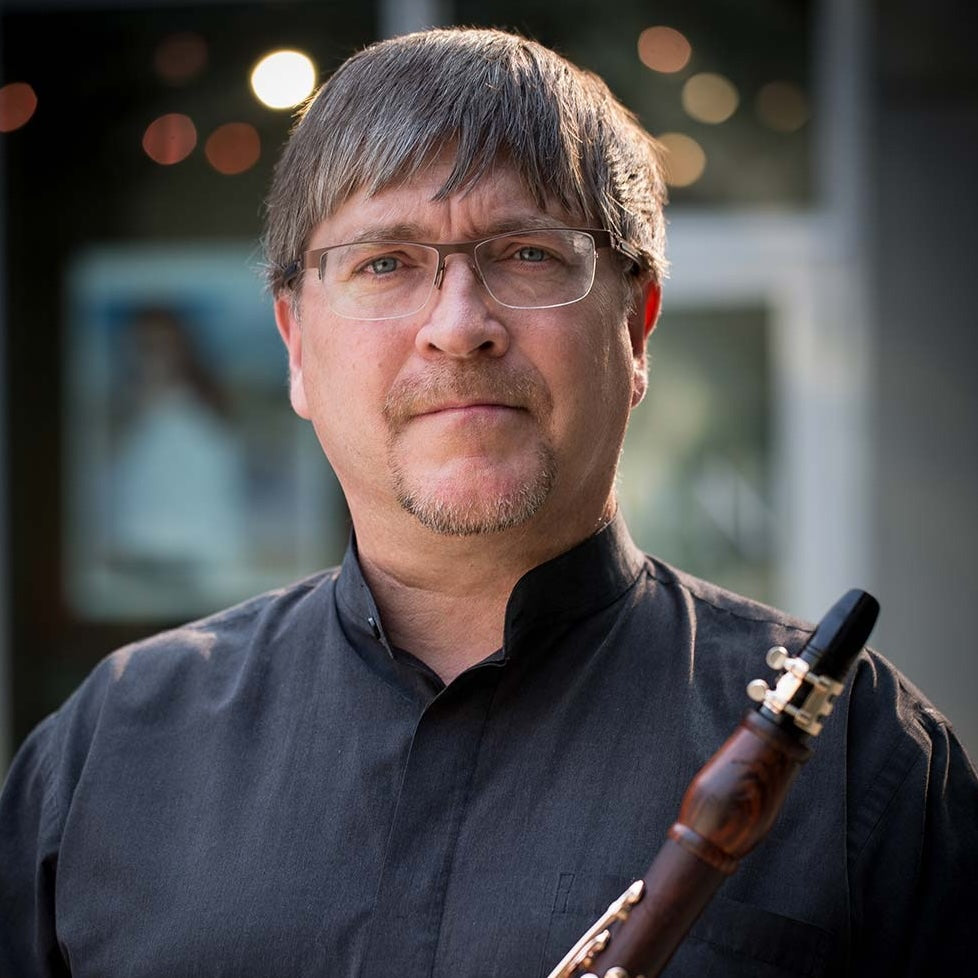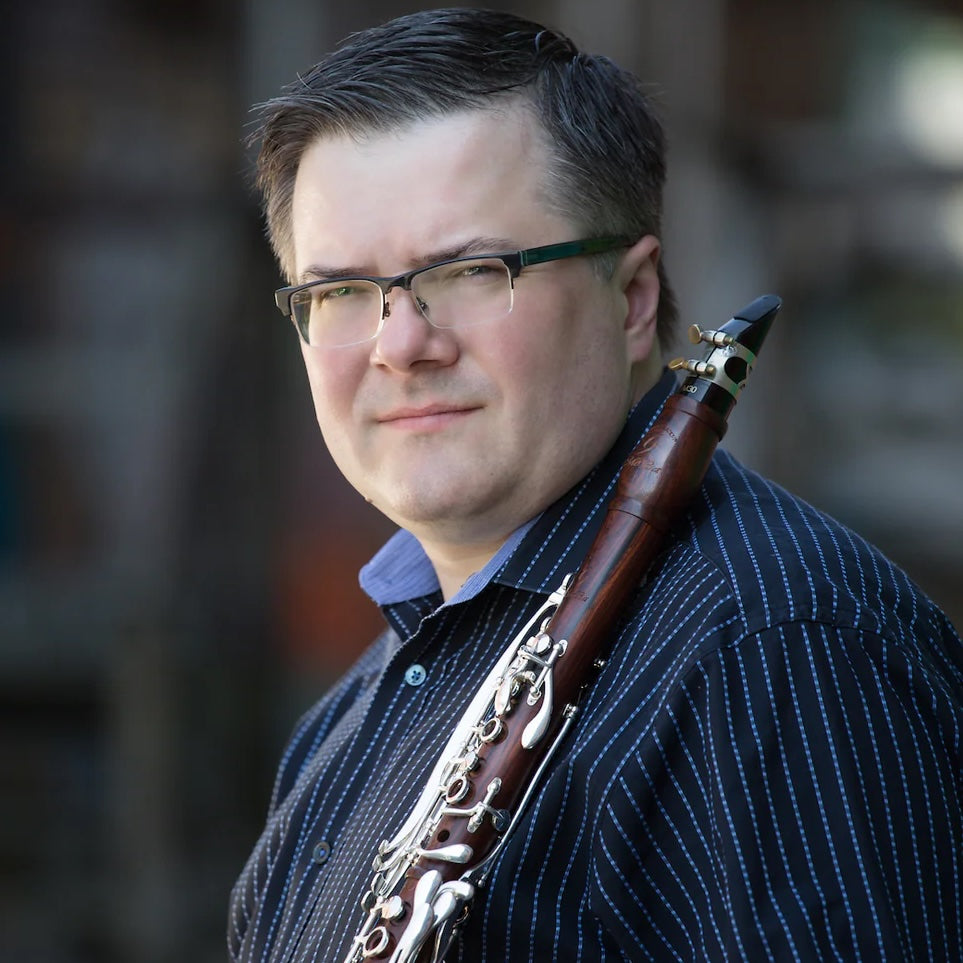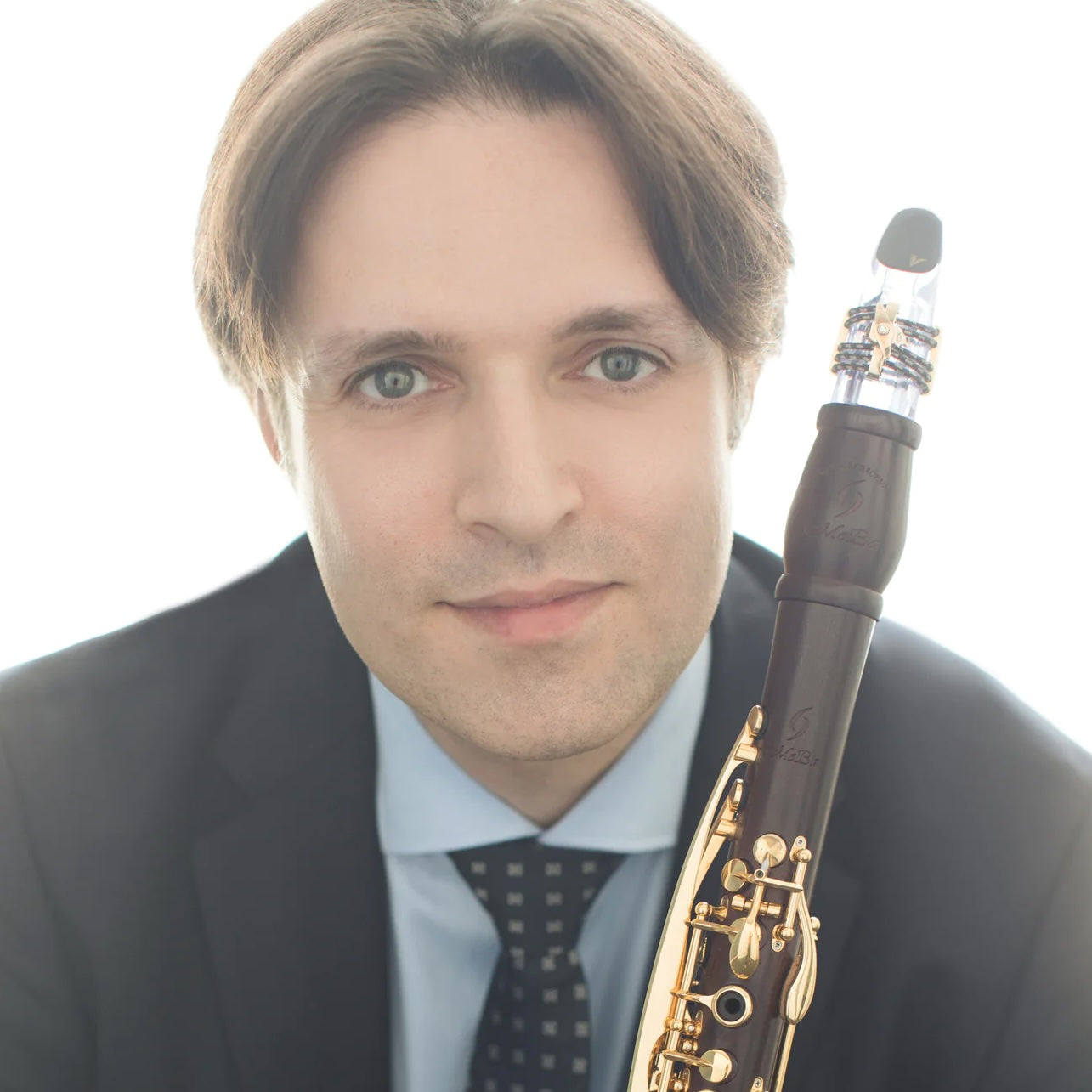In my opinion, the most important aspect of musical artistry is sound. Sound quality is what people initially evaluate when they hear someone play. If a musical sound is unpleasant to the ear, it doesn’t matter if a beautiful phrase is crafted or blazing technique is demonstrated — few will listen for long.
The final arbiter in all musical matters is the ear. Through the exercises outlined below, we’ll focus on three fundamental concepts essential in creating a beautiful sound: inhalation (full lung capacity), exhalation (with support), configuration of the oral cavity, and embouchure. It’s assumed that you have a high-quality reed, mouthpiece, and instrument. If you don’t, please correct these issues, otherwise you’ll be tilting at windmills.
What Is Support?
For years I could not find a definition that makes this technique understandable in the context of clarinet pedagogy or in a way that can be effectively relayed to students. I ask my students if a former teacher has told them at some point in a lesson, “You need to support that phrase.” If so, I ask them what this request means to them. In thirty-five years of teaching, I’ve had only two or three students who were able to define breath support in a way that makes sense to me. Someone may have a better definition than mine and if so, my hat’s off to them and please let me know so that I can share with my students!
Here’s my definition: Support is the dynamic, not static, relationship of the velocity of the airstream and the density of the airstream, with velocity the variable and density the constant.
Dynamics such as forte and piano are controlled simply by the velocity of airflow. We can of course apply varied levels of lower-lip pressure to the reed to influence the speed of airflow and response of the reed but, in my opinion, this can have a deleterious effect on sound quality. Perhaps this effect has a place in some musical settings, but for the purpose of this article we’ll assume static lower lip pressure. Also, I reside in the land of Goldilocks regarding lower-lip pressure — not too much, not too little, but just right.
It’s essential to develop intellectual curiosity. Intellectual curiosity creates the willingness to experiment that helps guide us to our aural North Star — the sound standard we choose to guide us in our pursuit of creating a beautiful tone. Of course, each of us must determine our own aural North Star. We accomplish this by the guidance of an excellent instructor, extensively listening to recordings and attending concerts. Remember, we learn to talk by listening and then imitating.
Experiment with a good mouthpiece/reed, different lip pressures, and different amounts of mouthpiece in your mouth. Determine the parameters of too much and too little, then find your Goldilocks mouthpiece placement and lip pressure. My experience has led me to finding the mouthpiece facing/reed strength/lip pressure that allows me to produce my optimum sound with the greatest degree of efficiency.
Inhalation and Exhalation
Proper inhalation requires knowing how to fill your entire lung capacity efficiently. As you inhale, strive for full expansion in your lower abdomen, lower back, and upper chest.
- Find a short section of clear plastic tubing (about one inch in diameter and six inches long, available at hardware stores). Another useful option is to use a Breath Builder Isomeric Exerciser. This is readily available on the Internet.
- Place one hand on your sternum and the other on your lower abdomen, about belt level.
- Place the tubing in your mouth and inhale. Inhaling through the large diameter of the tubing promotes an instinctive lower abdominal expansion. Slowly and steadily draw in air, and focus on expanding your lungs completely in the area of your lower hand/lower abdomen, then allow the upper hand to expand. You should also notice that your lower back slightly expands.
Exhaling is essentially the reverse of inhaling, with one important difference.
- Keeping your hands in the previously mentioned positions, with the plastic tube still in your mouth, exhale with the same slow and steady airstream, letting your upper hand collapse until your air capacity is almost exhausted, but don't let the lower hand collapse inward. As you exhale, your upper hand should collapse first, then your lower hand. Imagine pushing “down and out” with the abdomen while you exhale. The lower hand should collapse only at the very end of your exhalation.
A helpful visualization compares “hot” air to “cold” air. “Hot” air is produced when you exhale condensation on a pair of glasses to clean them. That “hah” sound produces an upper chest sensation and is an unsupported way to exhale. Supported exhalation involves “cold air,” which is generated in the lower abdomen. Imagine trying to blow out a candle that’s four feet away, maintaining a steady, high-velocity airstream. Imagine a laser beam–like airstream directed at the imaginary candle flame.
Tip: Practice the “cold air” exercise with hands placed as previously mentioned. Don’t let your lower abdomen collapse until the very end of your lung capacity.
What part of the human body is most closely analogous to the reed? The vocal chords, of course! Great singers understand air support; they have to.
- Try singing a good vocal vowel (E is a good one) sound using the aforementioned “hah” upper-chest airstream.
- Then try the same vowel sound using a “cold” airstream lower abdominal expansion, and pushing down and out as you sing the same vowel sound. I’m betting that you’ll notice a difference in sound quality. This is how I define density.
To sum up, learning to use your entire lung capacity while inhaling and then pushing “down and out” as you exhale creates a denser, supported airstream: the foundation of a beautiful sound.
Oral Cavity
It’s like patting your head while rubbing your tummy, but it’s important to develop the independence of an open oral cavity with the tongue in a relatively high, athletic position. Forming this physical relationship accomplishes two things. First, an athletic and relatively arched tongue position speeds up the velocity of the airstream efficiently, much the way the Venturi effect works with fluid dynamics. Secondly, it places the tongue in the optimum position for efficient articulation (again, athletic position).
- Pronounce the word “low” — make a perfectly round “O” with your lips (look in a mirror) — and arch your soft palette. (If you are wondering what an arched soft palette feels like, try yawning. The soft palette arches at the beginning of a yawn.)
- Then, while maintaining your round lip configuration with arched palette, move your tongue, independently of your oral cavity configuration, to the position that allows you to voice the vowel “E.” This is the key. “Low” allows the oral cavity to be open, for resonance, and “E” promotes a relatively high tongue position to produce a focused and fast-moving airstream.
- Look in a mirror and say the word “low.” Strive for a small, perfectly round opening in the lips and notice that your chin flattens naturally. Without moving your lips, say “E.” Visualize directing, then reflecting, a dense, supported airstream off of your soft palette and then the back of your incisors. The combination of the resulting phonic should sound similar to the German pronoun “ich” (you can search online for an audio pronunciation).
- While observing the aforementioned, keep your tongue as close to the reed as you can without touching it — even while articulating, it’s wise to move the tip as little as possible. Again, it’s all about efficiency.
It’s very important to know that the tongue can be too high in the oral cavity. I hear a lot of students say that their tongue position is in the “E” position without the consideration of an open oral cavity. This configuration restricts the efficient flow of your exhalation. Imagine a river that has one movable bank. This is a metaphor for your airstream and tongue. As the movable bank moves towards the opposite bank, the water of course speeds up (this is what we are trying to achieve with a relatively high tongue position — Venturi). But there is a point at which the increased water flow is at its fastest; beyond that ideal point, the flow of water, as a result of surface tension, starts to become restricted. And, as the movable bank gets even closer to the opposite bank, this constriction actually acts like a dam. This is why only pronouncing “E” without the open oral cavity is not efficient, and is, in fact, counterproductive.
Embouchure
Here is how to form an efficient embouchure in a couple of steps:
First you’ll need to set the lower lip/jaw combination. The lower lip/jaw combination is the foundation of the embouchure. The upper lip plays an important role but it’s not part of the foundation. Important: stand in front of a mirror as you practice these steps. I’ve yet to be able to see my face without the aid of a mirror!
- Imagine the corners of your mouth and the point of your chin as an equilateral triangle. Then imagine your lower lip divided into three equal parts. Draw in the upper two angles of the triangle (corners of your mouth — outside thirds) to the middle of your lower lip (the middle third). Maintain a flat chin as if you were trying to create a cleft in your chin. Don’t thrust your chin forward.
- Buzz your lips (while observing the aforementioned) as if you are forming a trumpet embouchure. You’ll notice that the upper lip will be drawn downward as a result. This is completely correct. What we are trying to form with the lower lip is a “bed of roses” for the reed to rest on while maintaining a rock-solid embouchure foundation. The amount of the red part of your lower lip that shows while “buzzing” is the correct amount, for you, of lower lip that should cover your lower teeth.
- While maintaining the previous configuration (still looking looking in the mirror), slide the mouthpiece into your mouth. Don’t let the friction of the reed drag your lower lip further over your lower teeth. Don’t reset your equilateral triangle. Once your foundation is set it does not move, even after you start to slide the mouthpiece into your mouth. When your reed touches your lower lip, nothing moves. If your chin-area equilateral triangle moves, start over. As you insert the mouthpiece into your mouth, when the beak of the mouthpiece contacts the top teeth, stop. Strive to have your lower lip at the approximate point that the reed separates from the lay/facing of the mouthpiece. This stop point will be contingent on the angle at which you hold the clarinet and the profile of the “beak” of your mouthpiece. Hold the clarinet no more than 35 to 45 degrees from parallel to your face, assuming your orthodontic occlusion is normal. Experiment with how much mouthpiece insertion produces your ideal aural North Star.
It’s important to understand that an efficient embouchure incorporates a “controlled” bite. Teachers often tell their students, “don’t bite.” What teachers really mean is “don’t bite excessively.” As a result, students sometimes don’t apply enough jaw pressure. It takes some pressure on the reed to focus reed vibration optimally. We use the corners of the mouth and the upper lip to maintain optimal and consistent jaw pressure on the reed. Remember, the function of the embouchure is to provide the optimum environment for the vibration of the reed.
In closing, I refer back to the final arbiter in all matters musical—our ears. All of the suggestions above, if done correctly, will get you in the neighbourhood of a good sound, provided you have a good reed, mouthpiece, and instrument. Our ability to listen with “one” ear and at the same time evaluate our real-time sound production with the “other ear” is an essential skill to get you fully home. Strive for efficiency in all aspects of sound production. To improve and ultimately maintain our ideal sound we must consistently navigate towards our aural North Star — our ideal sound. Intellectual curiosity — a willingness to patiently experiment with mouthpiece/reed configurations — coupled with mindful and dedicated practice are essential to producing outstanding results. It is essential that you remember what works and what does not. Experiment with only one change at a time so that when an experimental change does not work, you have a trail of breadcrumbs to follow back home. Best of luck finding your aural North Star!
Bil Jackson enjoys a varied musical career that includes solo, orchestral, and chamber music appearances. He is on the Artist Faculty at the Blair School at Vanderbilt University. Mr. Jackson has performed as Principal Clarinet with the Pittsburgh Symphony Orchestra, Colorado Symphony Orchestra, and Honolulu Symphony, and as Guest Principal Clarinet with the St. Paul Chamber Orchestra, Orchestra of St. Luke’s, St. Louis and Cincinnati Symphony orchestras. Jackson is currently on the summer Artist-Faculty of the Aspen Music Festival and Colorado College Music Festival. He is the only person to win the International Clarinet Competition twice and was a finalist in the Prague International Clarinet Competition. Bil Jackson is a Backun Artist and performs on MoBa clarinets and mouthpieces.



